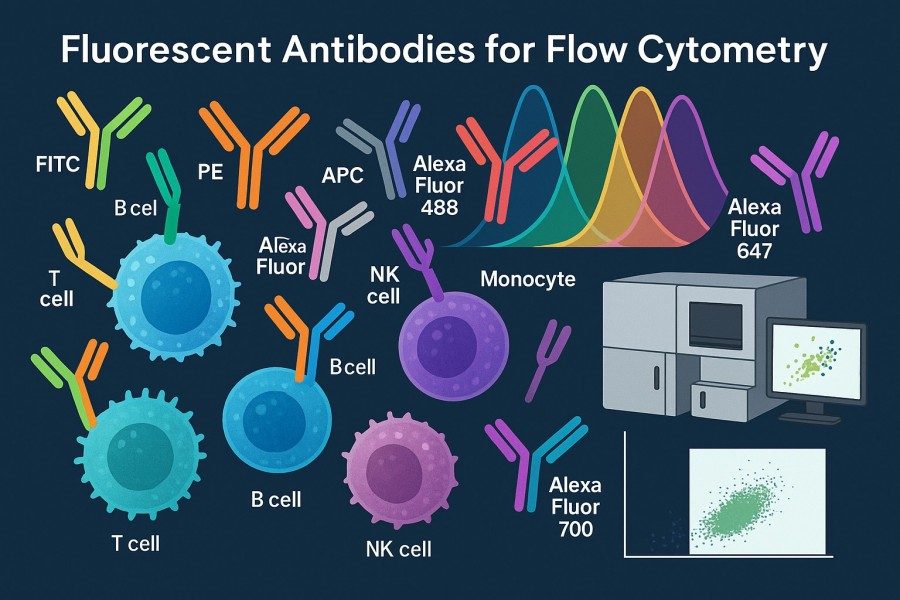
Fluorescent-Labeled Antibodies for Flow Cytometry: Maximize Sensitivity and Accuracy
2025-12-01
Flow cytometry is one of the most critical quantitative analysis techniques in modern immunology, cell biology, and biomedical research, while fluorescent-labeled antibodies are the core tools enabling high-sensitivity, multiparameter detection. With the advancement of multicolor flow cytometry, spectral cytometry, and high-dimensional cell analysis, researchers' requirements for antibody quality, labeling methods, and fluorophore selection have been steadily increasing.
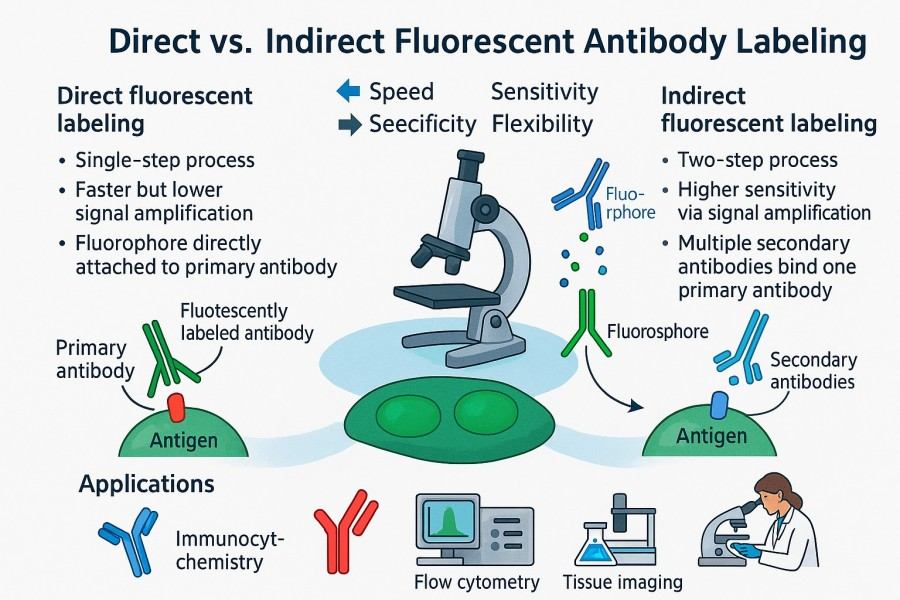
How Fluorescent-Labeled Antibodies Enhance Live Cell Imaging & Molecular Tracking?
2025-12-01
Fluorescent-labeled antibodies (or fluorescent antibodies) play a critical role in cell biology and molecular research by allowing sensitive and specific visualization of target proteins, receptors, and molecular complexes. Paired with fluorophores, these highly specific antibodies have become important reagents in research and have numerous advantages, including real-time tracking of target molecules, minimal interference with normal processes, and multicolor detection of multiple targets within a cell. Complex intracellular dynamic processes can be visualized, and more accurate data is provided for signaling pathway analysis, protein localization, and functional studies. Fluorescent-labeled antibodies are constantly becoming more useful with advancements in microscopy techniques and labeling strategies.
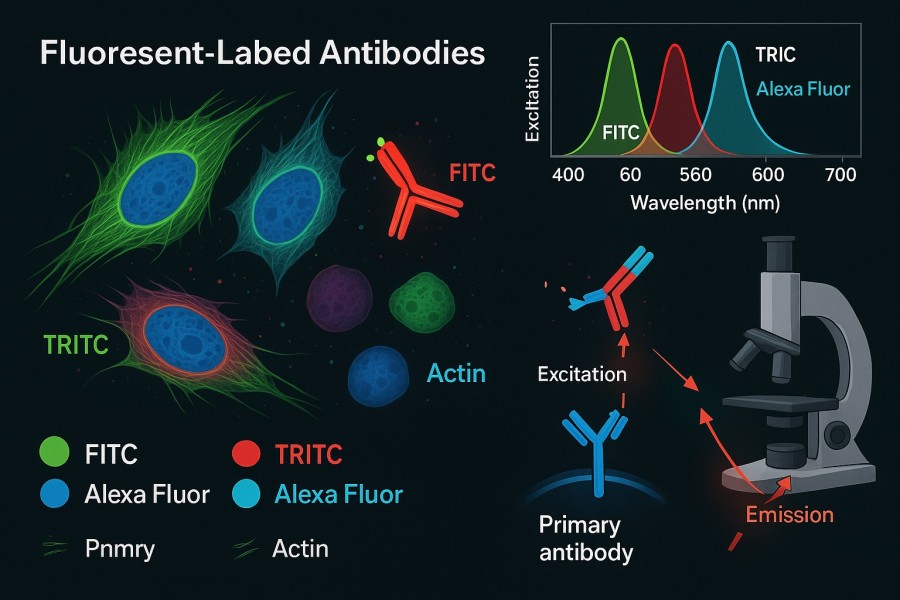
Tips for Reliable Imaging with Fluorescent-Labeled Antibodies in Immunofluorescence Imaging
2025-12-01
Fluorescent-labeled antibodies are one of the most essential tools in immunofluorescence microscopy. By conjugating specific antibodies with high-performance fluorophores, researchers can precisely localize target proteins within cellular and tissue environments and obtain clear, reproducible imaging data. As microscopy technologies continue to advance, immunofluorescence not only enables high-resolution spatial visualization but also supports multiplex detection, dynamic process tracking, and in-depth molecular analysis. However, achieving high-quality imaging is not always straightforward—fluorophore selection, antibody specificity, sample preparation methods, and imaging parameters all influence the clarity and reliability of the final images. To help researchers obtain more stable, brighter, and highly interpretable results, this guide systematically explains the key principles of fluorescent-labeled antibodies, best experimental practices, and strategies to resolve common issues.
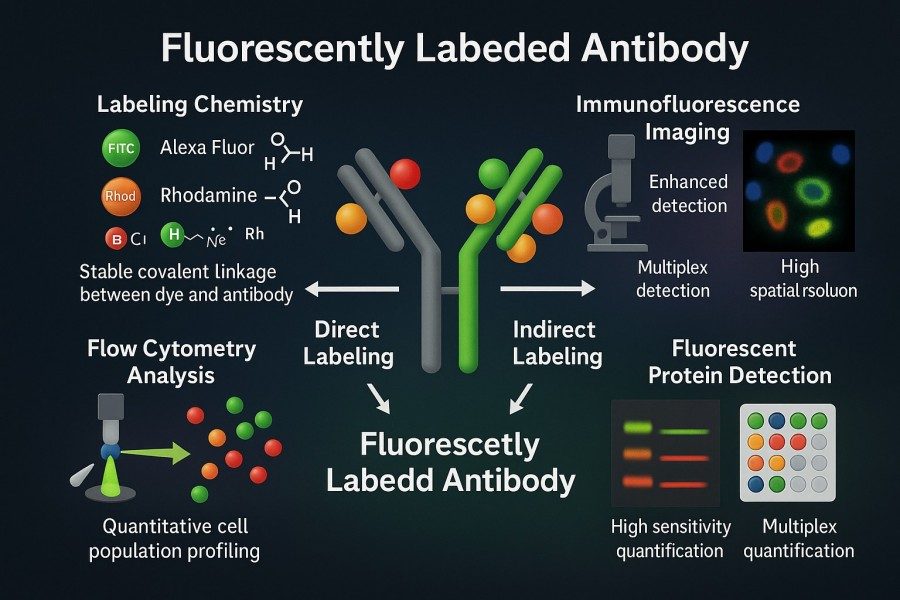
Fluorescent Antibodies in High-Throughput Screening: Techniques and Best Practices
2025-12-01
High-throughput screening (HTS) is a core technology in drug discovery, molecular target validation, and biological pathway research. With the advancement of automation, miniaturized workflows, and detection technologies, fluorescent-labeled antibodies have become increasingly important in HTS. Thanks to their high sensitivity, specificity, and multiplexing capabilities, they are key tools for enhancing screening efficiency, data quality, and imaging resolution. This article provides a comprehensive overview—from technical principles, screening workflows, and fluorophore selection to applications, optimization strategies, and challenges—to help researchers and pharmaceutical companies establish reliable, reproducible, and scalable HTS systems.
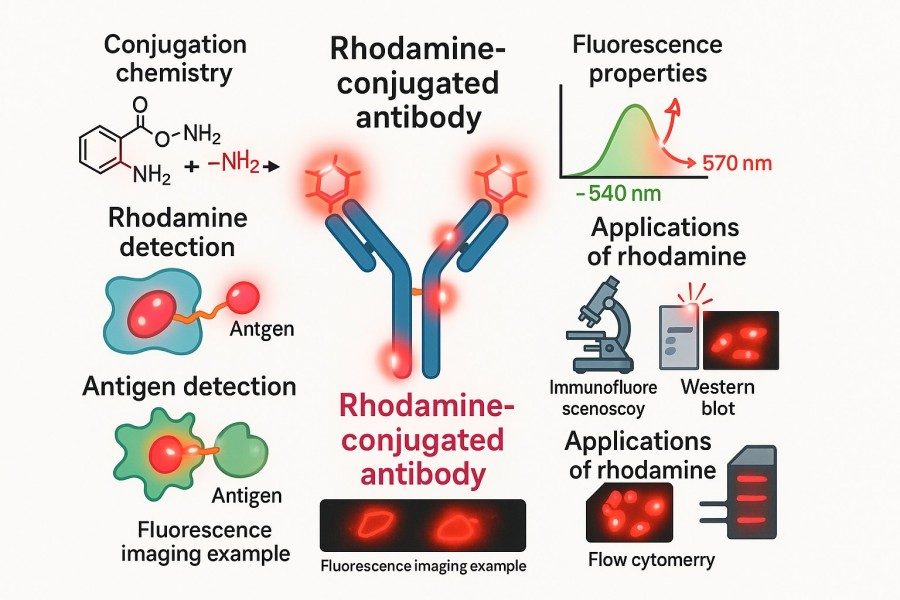
Bright and Reliable: Rhodamine for Antibody Labeling in Biotech and Pharma
2024-10-07
As a red fluorescent dye, Rhodamine provides clear and long-lasting fluorescence signals, widely used in experiments such as flow cytometry, immunofluorescence microscopy imaging, and drug screening. In molecular detection, targeted therapies, and disease research, Rhodamine-labeled antibodies not only ensure a high signal-to-noise ratio but also maintain stability under various experimental conditions, guaranteeing the reliability and reproducibility of results. This makes Rhodamine an ideal choice for researchers conducting precise analysis and real-time molecular tracking.
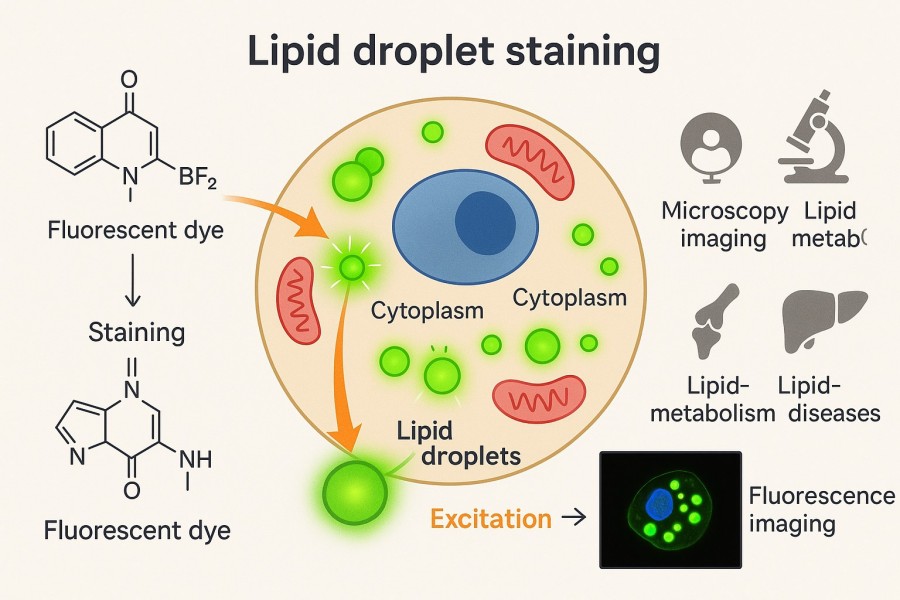
How to Effectively Stain Lipid Droplets Using BODIPY Dyes: A Practical Guide for Researchers
2025-08-29
Lipid droplets (LDs), as crucial intracellular centers for energy storage and signal regulation, play key roles in metabolism, cellular stress responses, and the development of various diseases. Accurate visualization of lipid droplets not only helps reveal their biological functions but also provides critical insights for drug screening and mechanistic studies. BODIPY dyes, with their high lipophilicity, strong selectivity, and stable fluorescence, have become the preferred tools for lipid droplet staining and imaging. This guide offers researchers a practical approach to BODIPY-based lipid droplet imaging, covering dye selection, experimental procedures, imaging techniques, and troubleshooting tips, aiming to help scientists overcome experimental challenges and obtain high-quality, reliable lipid droplet imaging data.
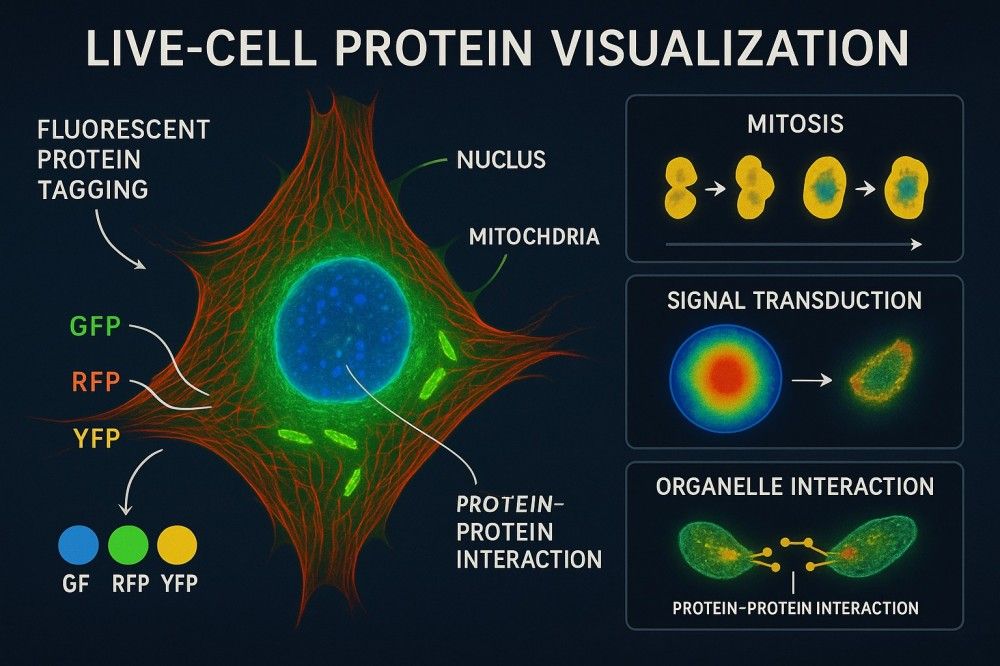
How Fluorescent Proteins Overcome Live-Cell Protein Visualization Challenges?
2025-07-19
Live-cell protein visualization technology is a fundamental basis of modern cell biology. It enables scientists to observe in real time the localization, dynamic changes, and functional states of proteins within cells, thus gaining deeper understanding of the molecular mechanisms in life processes. However, the complex environment of living cells often brings multiple challenges such as weak signals, high background noise, photobleaching, and phototoxicity, which limit the effectiveness of traditional imaging techniques. Fluorescent proteins (FPs), as genetically encoded endogenous labeling tools, play an important role in alleviating these bottleneck problems due to their diverse optical properties and high specificity.
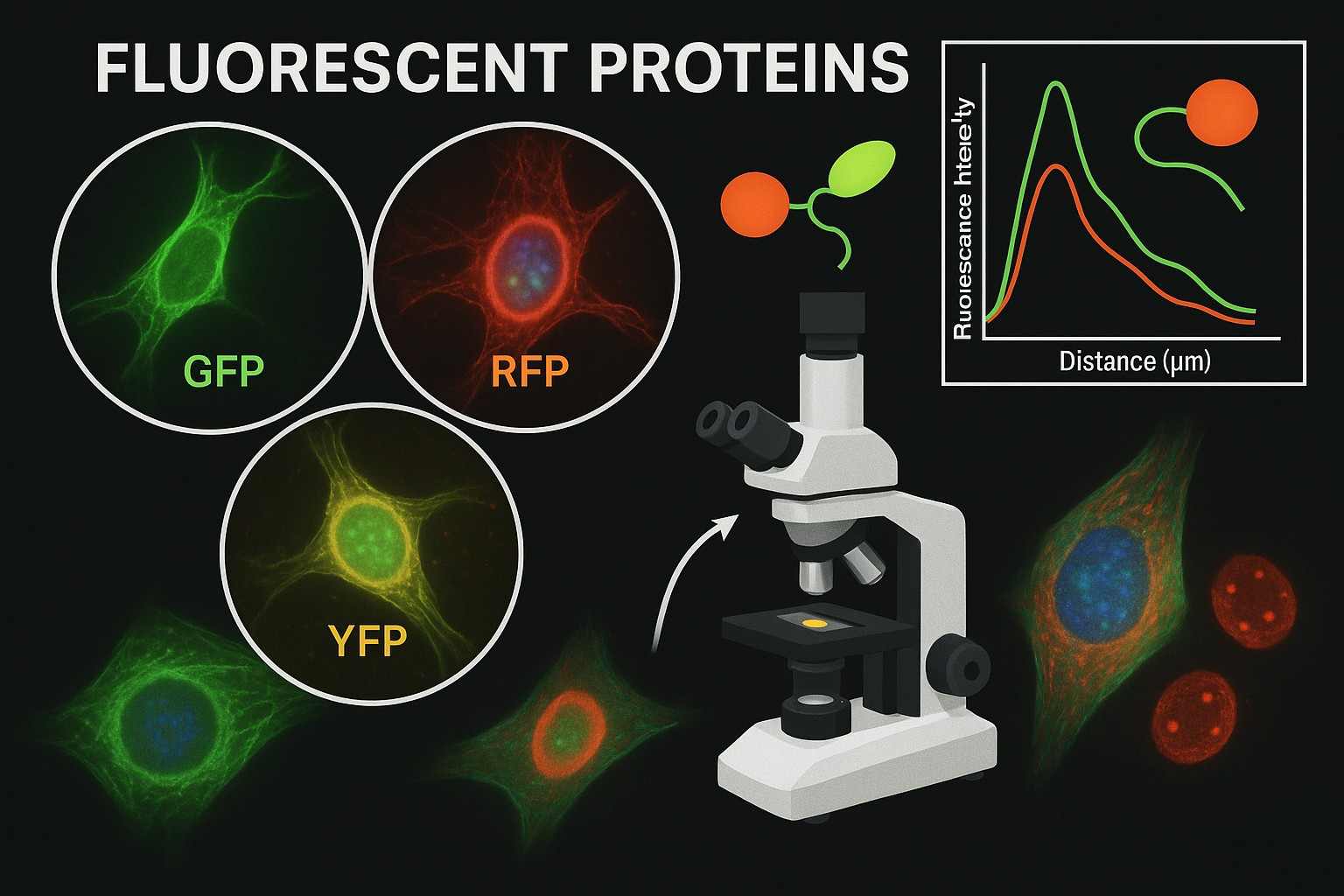
Fluorescent Proteins in Bioimaging: Challenges and Innovative Solutions
2025-07-19
Fluorescent proteins, as core tools in bioimaging technology, leverage their unique intrinsic fluorescence and genetic encoding advantages to enable highly specific labeling and dynamic tracking of molecules and structures within living cells. In addressing challenges such as photobleaching, signal attenuation, and nonspecific labeling during bioimaging, fluorescent proteins offer researchers powerful solutions due to their excellent biocompatibility, customizability, and diverse spectral properties.
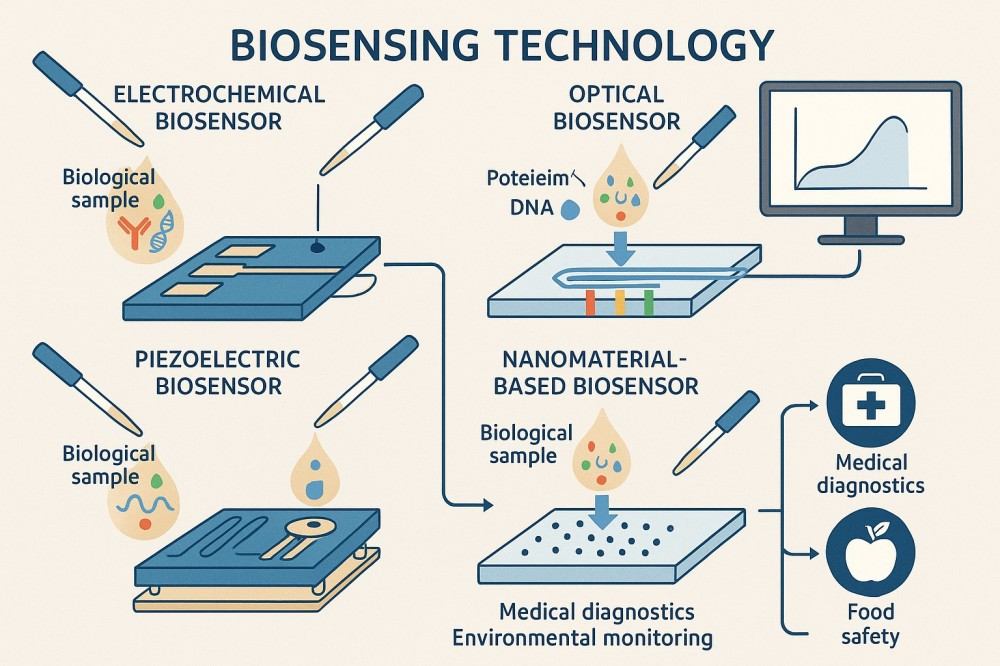
How Fluorescent Nanoparticles Overcome Challenges in Biosensing?
2025-07-19
As the field of biosensing technology advances rapidly, highly sensitive, specific, and efficient detection methods are being applied in fields such as disease diagnosis, environmental monitoring, and food safety testing. However, existing sensing technologies based on traditional methods often encounter the issues of insufficient sensitivity, poor selectivity, and slow detection speed when faced with complex biological samples. As a novel biosensing tool, fluorescent nanoparticles, endowed with superior fluorescent properties, good biocompatibility, and high sensitivity, have emerged as one of the key technologies to address these problems.
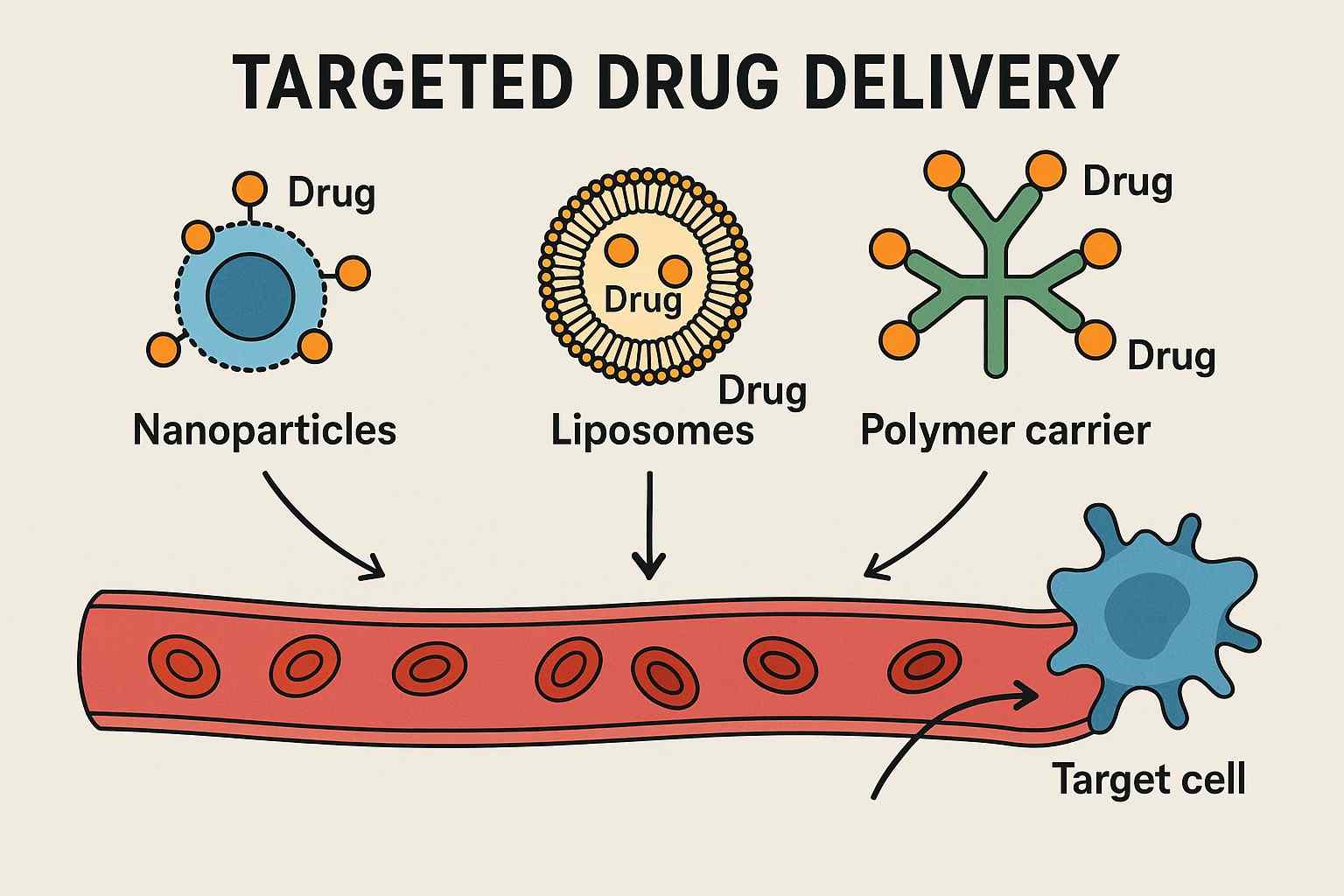
Targeted Drug Delivery: Overcoming Research Challenges with Fluorescent Nanoparticles
2025-07-19
Fluorescent nanoparticles refer to nanoscale materials, typically ranging in size from 1 to 100 nanometers, that possess the ability to emit fluorescence. Depending on their composition, fluorescent nanoparticles can be categorized into quantum dots, rare-earth doped nanoparticles, organic fluorescent polymer nanoparticles, and carbon dots. These nanoparticles exhibit excellent optical properties, such as high brightness, broad absorption bands, narrow emission peaks, and good photostability. They also feature favorable biocompatibility and functionalizable surfaces, facilitating targeted modification and drug loading. With the rapid advancement of nanotechnology, these nanoparticles, due to their unique physical, chemical, and biological characteristics, have become important components in modern drug delivery systems.
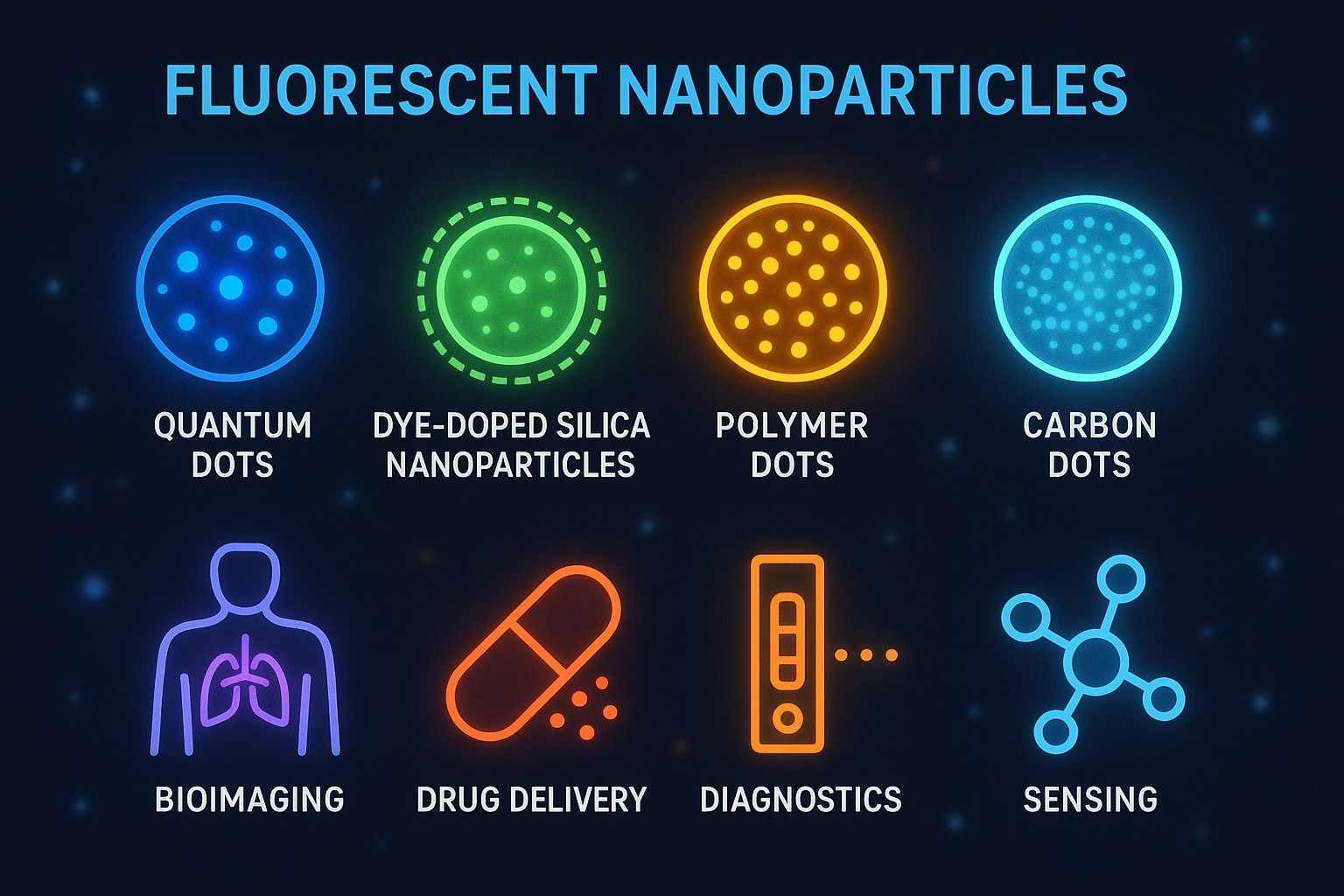
How Fluorescent Nanoparticles are Transforming Bioimaging in Research?
2025-07-19
As life sciences and medical research continue to advance, bioimaging technologies play a vital role in revealing cellular functions, molecular mechanisms, and disease diagnosis. However, traditional imaging methods often face numerous challenges due to insufficient sensitivity, limited resolution, and lack of real-time monitoring capabilities. Fluorescent nanoparticles are tiny particles ranging from 1 to 100 nanometers in size that can emit stable and intense fluorescent signals. Their emission wavelengths can be tuned by adjusting materials and sizes, and they possess high photostability and excellent biocompatibility. With these unique properties, fluorescent nanoparticles provide higher sensitivity, superior spatial resolution, and real-time dynamic monitoring capabilities for bioimaging, becoming an important tool for overcoming the limitations of conventional technologies.
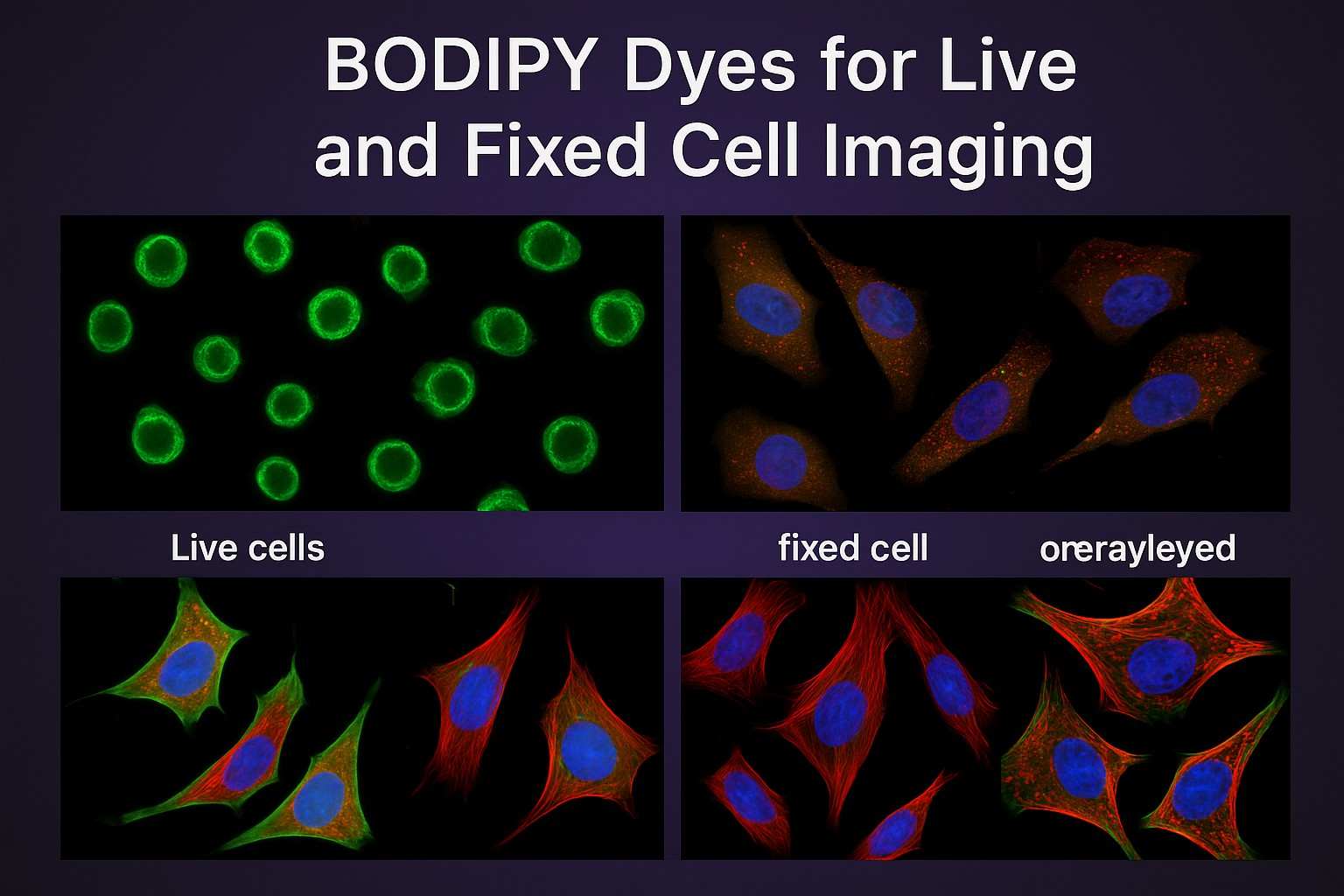
Technical Guidance for Live and Fixed Cell Imaging with BODIPY Dyes
2025-06-27
BODIPY fluorescent dyes, with their high brightness, excellent photostability, and outstanding cellular compatibility, hold an important position in modern cell imaging techniques. Whether for dynamic observation of live cell behavior or precise localization of molecular targets in fixed cells, BODIPY dyes demonstrate superior performance. To fully exploit their imaging potential, researchers need to scientifically optimize experimental design, dye selection, staining conditions, and imaging parameter settings. This article will systematically introduce the application techniques and key technical points of BODIPY fluorescent dyes in live and fixed cell imaging, helping researchers obtain high-quality and reproducible imaging results.
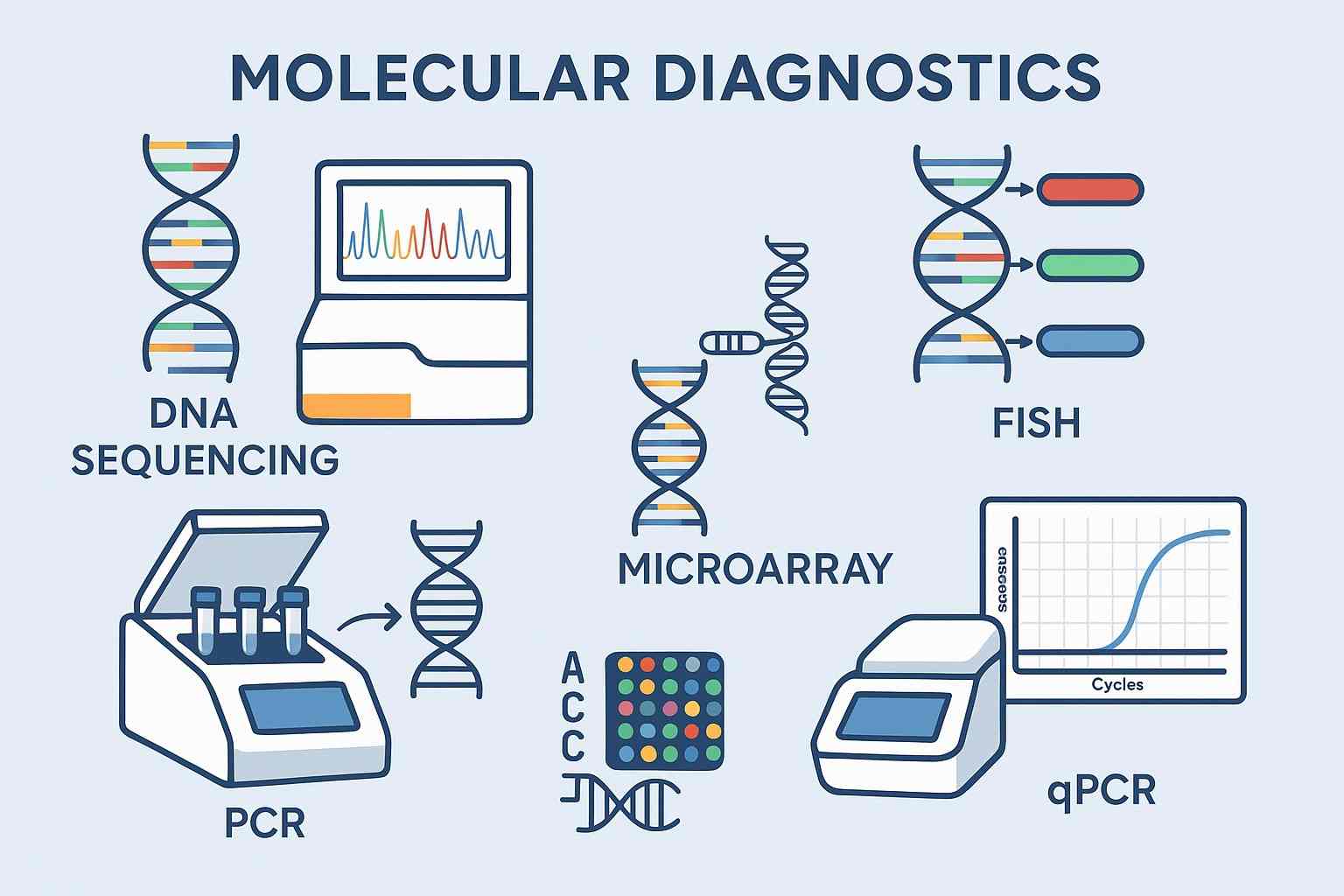
How BODIPY Dyes Revolutionize Molecular Diagnostics Research?
2025-05-24
Molecular diagnostics relies on highly sensitive and specific detection technologies, with fluorescent dyes being the key to achieving precise signal output. Due to their excellent photostability, high brightness, and tunable spectral properties, BODIPY dyes are widely used in various molecular diagnostic techniques such as real-time PCR, fluorescence in situ hybridization (FISH), nucleic acid probe labeling, and high-throughput screening. Their low toxicity and multifunctional modification capabilities make BODIPY an ideal fluorescent tool that drives the precision, multiplexing, and efficiency of molecular diagnostics, thereby supporting early disease detection and personalized treatment development.
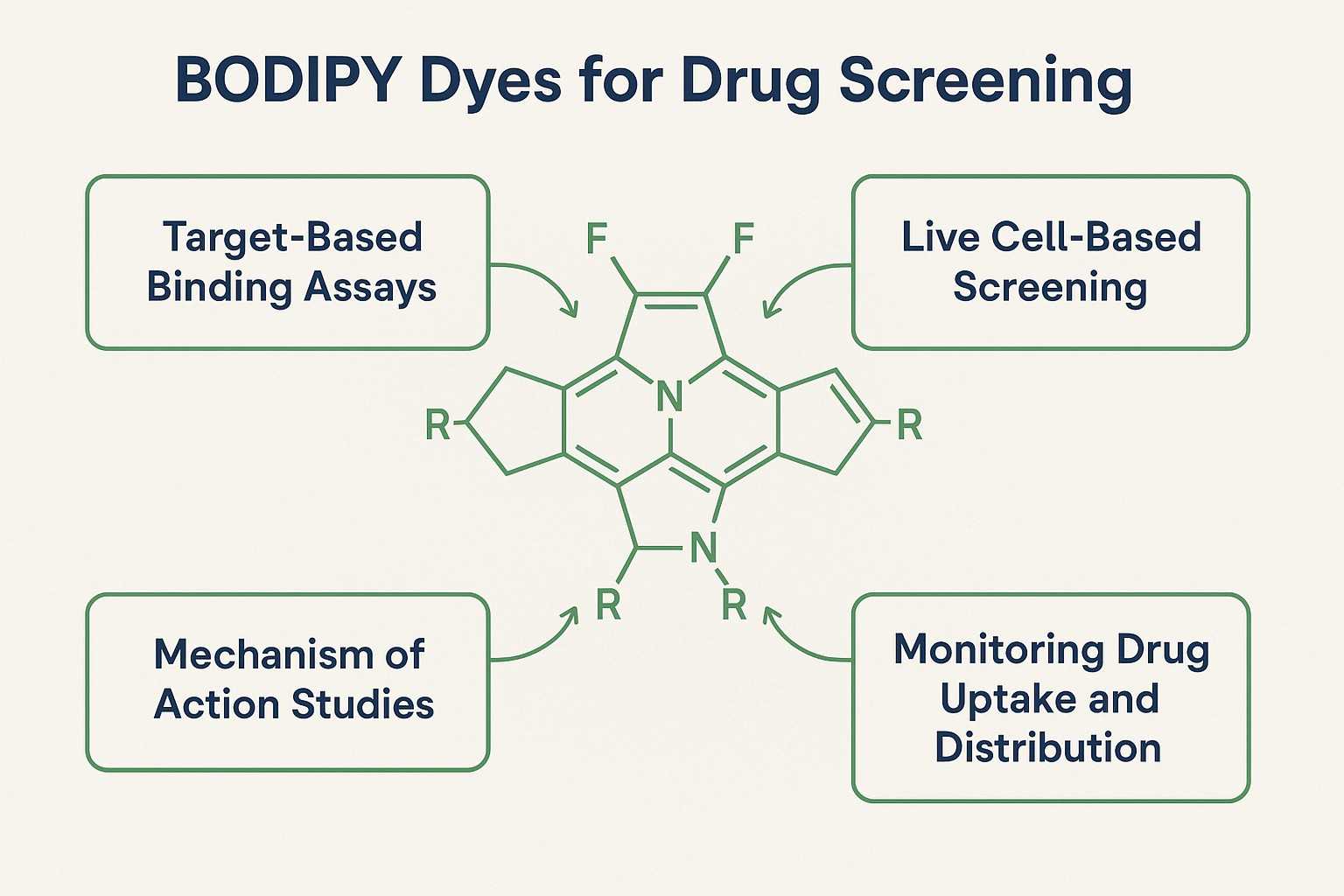
Enhancing Drug Screening with BODIPY Dyes: Challenges and Applications
2025-04-19
In modern drug development, drug screening is a critical step in discovering potential candidate molecules. As screening scales expand and targets become increasingly complex, traditional detection technologies and dyes face challenges such as insufficient sensitivity, limited multichannel capability, and unstable signals. BODIPY dyes, with their high brightness, excellent photostability, and flexible structural tunability, have become ideal fluorescent tools. They not only support multiplexed high-throughput screening but also provide stable and reliable signals in live-cell imaging, target binding, and mechanism studies, significantly enhancing screening sensitivity and accuracy. This article will explore the advantages, challenges, and innovative solutions of BODIPY dyes in drug screening to accelerate new drug development.
![]()
BODIPY Dyes for Cell Tracking: Precise and Stable Fluorescent Labeling
2025-03-20
With the rapid development of cell biology, immunotherapy, and regenerative medicine, cell tracking technology occupies an indispensable position in modern biomedical research. To achieve dynamic monitoring and spatial localization of specific cells, researchers urgently need a fluorescent dye with high sensitivity, low toxicity, and persistent signal. BODIPY (Borondipyrromethene) dyes, due to their excellent optical properties and good cellular compatibility, are becoming an ideal choice in cell tracking research.
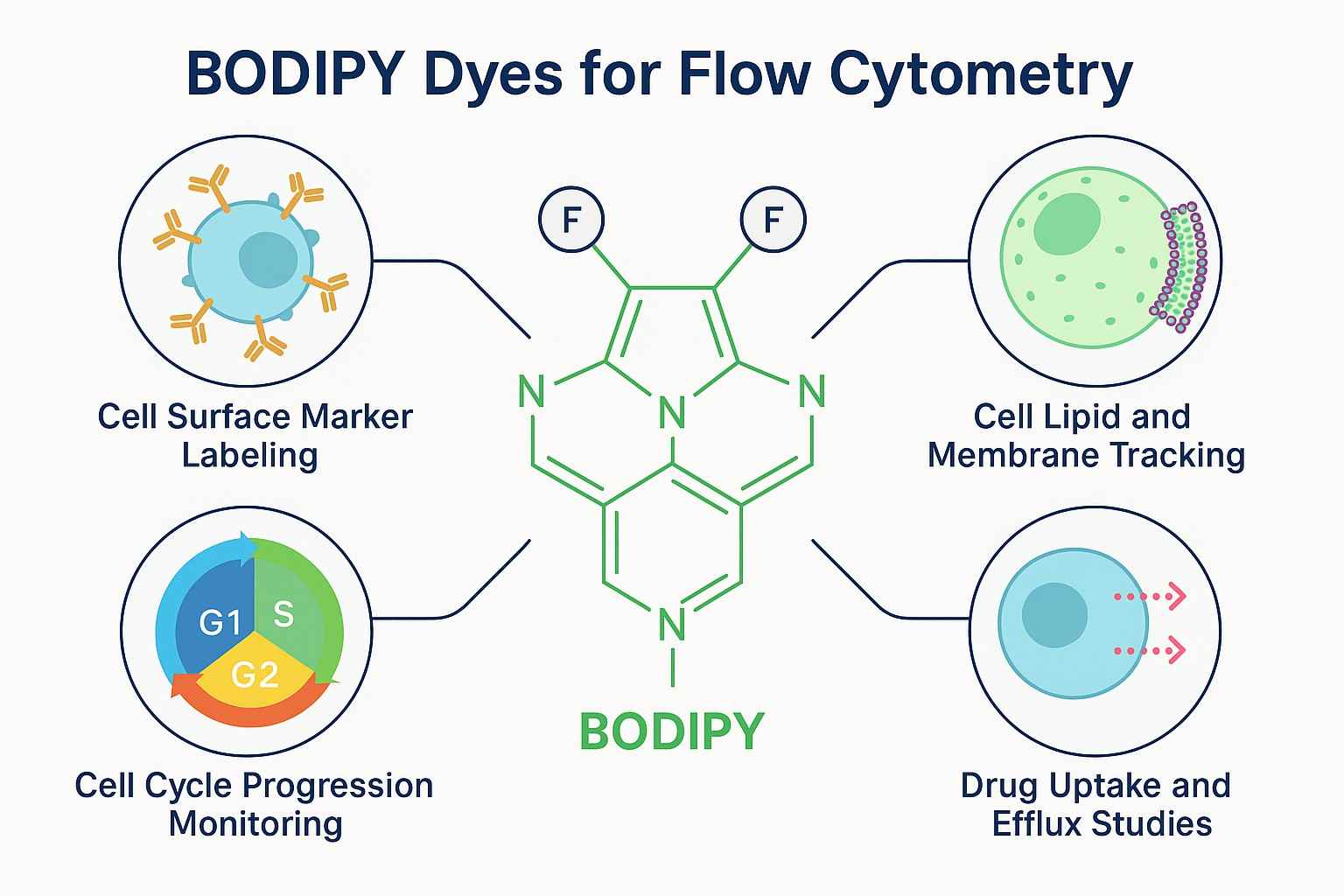
BODIPY Dyes for High-Performance Flow Cytometry Analysis
2025-02-26
In today's era of flow cytometry emphasizing high sensitivity and multiparameter analysis, the selection of fluorescent dyes has become a critical factor determining experimental success. BODIPY (boron-dipyrromethene) dyes, owing to their unique structure and excellent optical properties, are gradually becoming ideal tools for high-performance flow cytometry analysis. Compared to traditional fluorescent dyes, BODIPY exhibits significant advantages such as tunable emission wavelengths, high fluorescence quantum yield, strong photostability, and low background signal. These characteristics make it particularly suitable for complex multicolor panel designs and long-term acquisition experiments.
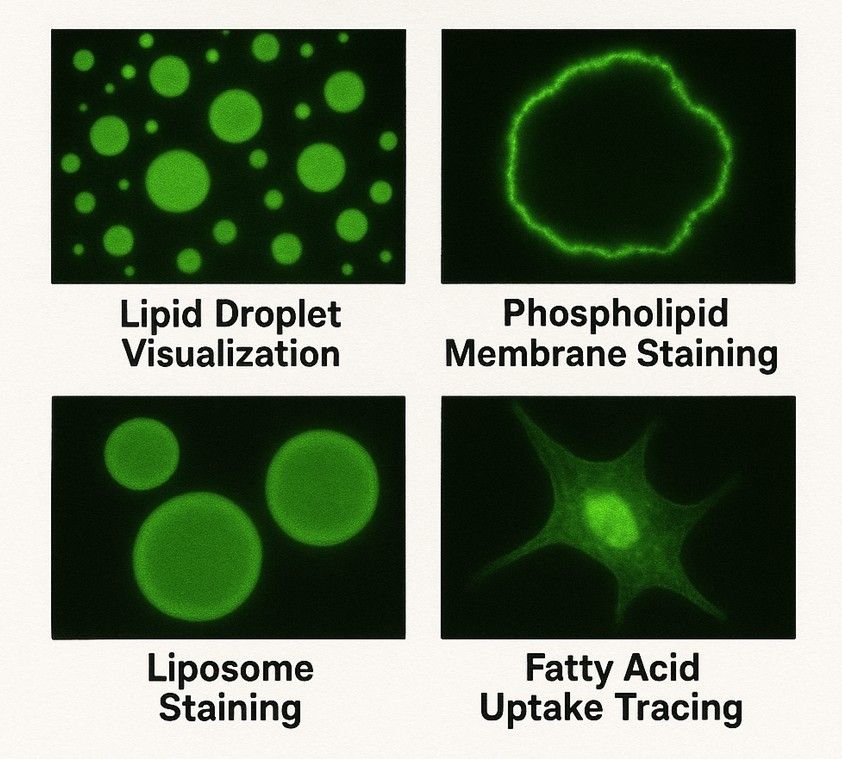
Lipid Staining with BODIPY Dyes: Accurate Visualization of Lipid Structures
2025-02-15
In cellular lipid research, accurately locating and tracking lipid droplets, membrane structures, and lipid metabolic pathways is crucial. BODIPY dyes have become ideal tools for lipid staining due to their strong lipophilicity, high fluorescence intensity, and excellent photostability. They are used in various applications such as lipid droplet imaging in live cells, fatty acid uptake analysis, and membrane structure labeling. However, challenges remain, including low signal-to-noise ratio in dense lipid environments and photobleaching of traditional dyes. This article systematically explores how BODIPY dyes overcome these technical bottlenecks and demonstrates their broad application and customization potential in lipid visualization.
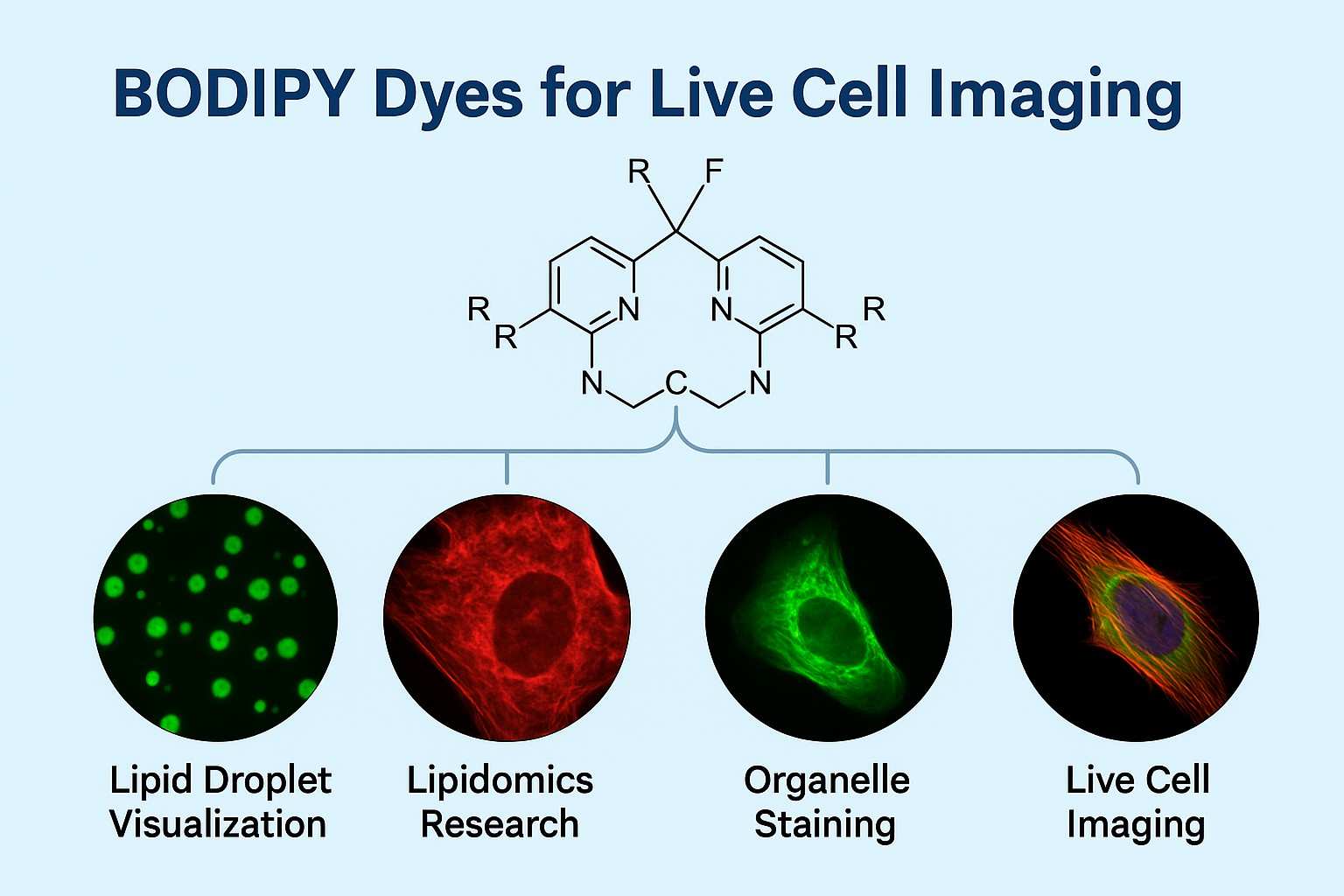
Live Cell Imaging Made Easy with Custom BODIPY Fluorophores
2025-01-26
Cell imaging technology serves as a crucial research instrument in life sciences by allowing scientists to visually track the dynamic changes in cellular structure and function to achieve significant breakthroughs in biomedical research. Live cell imaging with traditional fluorescent dyes encounters constraints like limited photostability together with signal overlap and toxic effects, which reduce imaging quality and limit experimental adaptability. Live cell imaging now often uses BODIPY dyes because they offer superior photostability with narrow spectral emission and low toxicity levels. Custom-designed BODIPY probes enable researchers to precisely mark cell membranes and organelles as well as lipid droplets while also facilitating multimodal imaging to enhance visualization of complex biological processes.
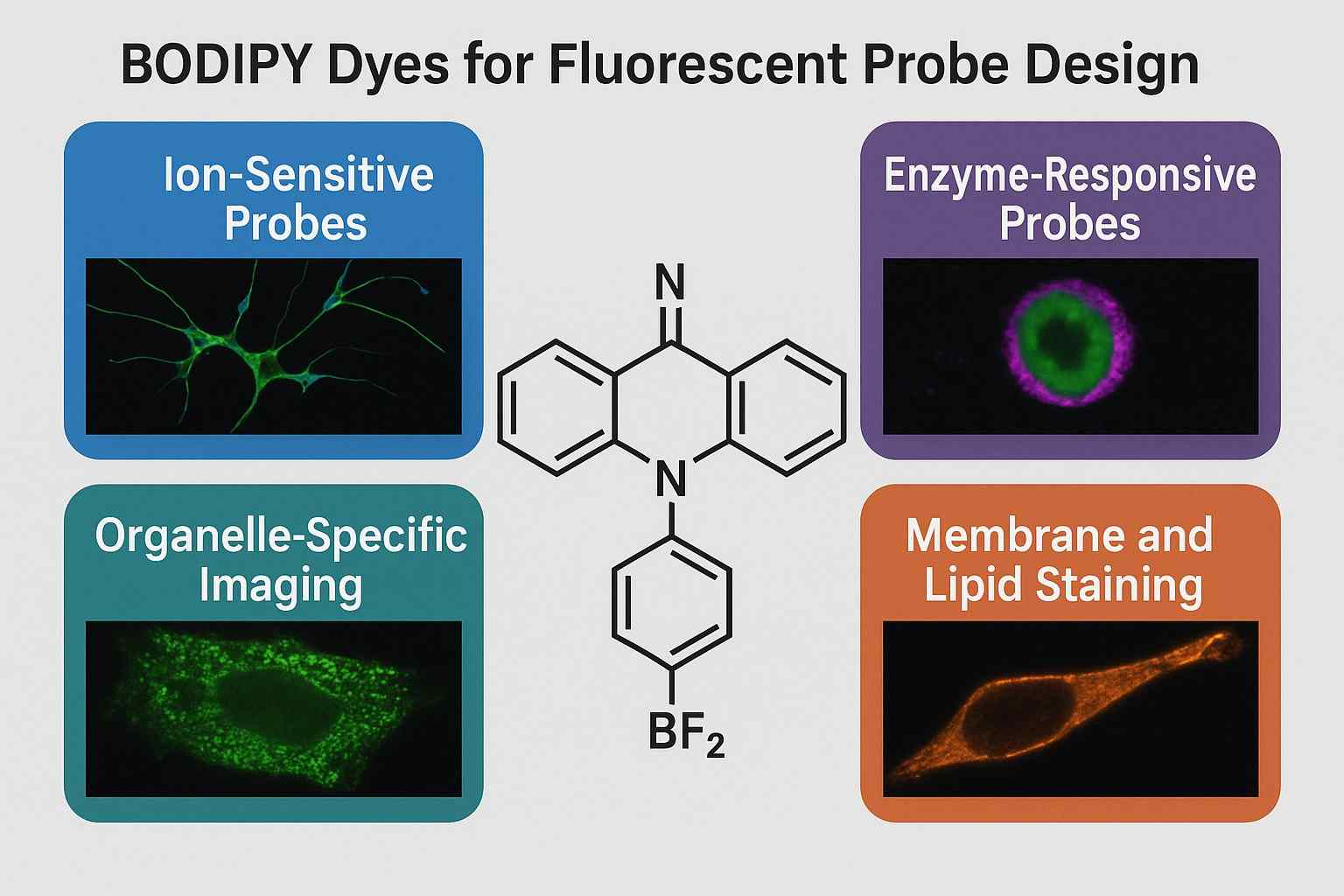
How BODIPY Dyes Improve Fluorescent Probe Design?
2025-01-10
Fluorescent probes serve as essential instruments for bioimaging and molecular diagnostics because they enable visualization of biological processes at cellular and molecular scales. These probes function as essential tools to visualize both cellular structures and biological processes by enabling researchers to track ion dynamics and monitor enzyme activity. The creation of efficient fluorescent probes presents multiple obstacles that need to be overcome through high signal-to-noise ratio achievement while maintaining stability and target specificity and meeting multiplexing needs. BODIPY (boron-dipyrromethene) dyes stand out among these challenges because they offer unique advantages that have drawn significant research interest.
![]()
Optimizing Drug Delivery with BODIPY-Based Imaging and Tracking
2024-12-29
The development of precise and efficient drug delivery systems remains crucial in modern pharmaceutical research to boost therapeutic efficacy while reducing side effects. Significant challenges persist in tracking the distribution, release, and targeting abilities of drugs during in vivo studies. Traditional imaging and tracking methods cannot fulfill real-time, high-resolution, and multidimensional monitoring requirements, which restricts comprehensive research and optimization in drug delivery systems. BODIPY dyes serve as fluorescent labeling tools with superior optical properties and biocompatibility, which makes them valuable instruments in drug delivery research because they demonstrate exceptional photostability and quantum yield together with adjustable emission wavelengths.

Fluorescent Dyes for Carbohydrate Labeling
2024-12-21
The carbohydrate labeling using fluorescent dyes is a versatile tool for carbohydrate molecule detection and analysis. Carbohydrates serve a number of critical functions in the body, such as cell detection, signalling, and immune activity. But because carbohydrate molecules are so complex and heterogeneous, traditional methods of detection have trouble spotting them clearly and diagnosing their structure and activity. By attaching fluorescent dyes to the molecule of carbohydrate, scientists can track how carbohydrates evolve over time and watch their movement through cells. This will not only help with a detailed understanding of carbohydrates in biology, but it can also provide new avenues for early disease detection, detecting pathogens and developing medications. With increasing tech development, the possibilities of using fluorescently labeled carbohydrates are ever more diverse.

Fluorescent Dyes for Small Molecule Labeling
2024-12-06
Fluorescent dyes for small molecule labelling are increasingly used in modern biological research and drug discovery. The conjugation of fluorescent dyes to small molecules confers visualisation capability on the molecules, enabling scientists to measure their distribution, metabolism and interaction over time, in vitro and in vivo. Small molecule fluorescent labelling is widely used in drug screening, cell imaging, molecular interaction studies, diagnosis and much more. Because the fluorescent dyes are a broad variety with different fluorescent properties, experimenters can choose the best dye for their experiment, which in turn makes experiments even more sensitive and precise. As the technology matures, fluorescently marked tiny molecules will become more central to disease research and personalized medicine.

Fluorescent Dyes for Peptide Labeling
2024-11-15
Fluorescent markers are widely used in protein function research and drug screening. Fluorescently labeled peptides are often used to detect the activity of target proteins. The high-throughput activity screening methods developed from this are applied to drug screening and drug development of disease-related target proteins (such as various kinases, phosphatases, and peptidases). Therefore, fluorescent modification of peptides is an important aspect in the field of peptide synthesis.

Fluorescent Dyes for Antibody Labeling
2024-11-04
Fluorescent antibody labeling technology uses chemical methods to covalently couple fluorescent dyes to specific antibodies. After the antibody-fluorescent complex specifically binds to the corresponding antigen, the fluorescent signal is observed through instruments such as fluorescence microscopes to achieve the positioning, qualitative or quantitative detection of the target sample. It provides researchers with an effective method to study molecular and cellular structures in biological systems.

Fluorescent Dyes for Protein Labeling
2024-09-04
Fluorescent dyes are a class of chemicals that can emit fluorescence when excited by light of a specific wavelength. They have high sensitivity, high selectivity, and good photostability, and are widely used in various analytical techniques in biomedicine and biological research. There are many types of fluorescent dyes, including organic small molecule dyes, fluorescent proteins, and quantum dots, each with different spectral characteristics and applicable ranges. In terms of protein labeling, fluorescent dyes bind to target proteins through covalent or non-covalent bonds, and the localization and dynamic changes of proteins can be visually observed under a microscope. This technology is widely used in cell biology, molecular biology, and drug development.

Cyanine Dyes for RNA Labeling
2024-08-13
Cyanine is a class of organic dyes with unique optical properties, which are widely used in biomedicine and biotechnology. Its fundamental structure is a polyene chain made up of two aromatic rings joined by a conjugated double bond chain. Particularly popular for use in RNA labeling are cyanine dyes. Researchers can track and quantify RNA molecules quantitatively by using cyanine dyes to link them to RNA molecules by chemical coupling or covalent bonding technologies. The study of RNA distribution, dynamic changes, and interactions has benefited immensely from this technique.

Cyanine Dyes for DNA Labeling
2024-08-10
Cyanine dyes are a class of organic dyes with extremely high fluorescence sensitivity and diverse bonding capabilities, and are widely used for DNA labeling in biological and medical research. Since cyanine dyes have special optical and chemical characteristics that make them a valuable tool for molecular biology and genetics research, they are used in the DNA labeling process. For example, cyanine dyes offer a high temporal and spatial resolution method for examining the dynamics of DNA molecules in single-molecule FRET (Förster resonance energy transfer) investigations.

Cyanine Dyes for Nucleotide Labeling
2024-07-15
Cyanine dyes are a class of fluorescent dyes widely used in the fields of biomedicine and biotechnology. They can efficiently limit the interference of background fluorescence because of their high fluorescence quantum yield, wide spectrum range, and strong absorption and emission wavelengths in the visible and near-infrared areas. Because of these qualities, cyanine dyes are excellent choices for imaging and detecting applications. An important method in nucleotide labeling is the use of cyanine dyes to label DNA or RNA. To achieve high-sensitivity and high-specificity detection and imaging, cyanine dye-labeled nucleotide probes can be employed in methods including fluorescence microscopy, flow cytometry, and fluorescence in situ hybridization (FISH).

